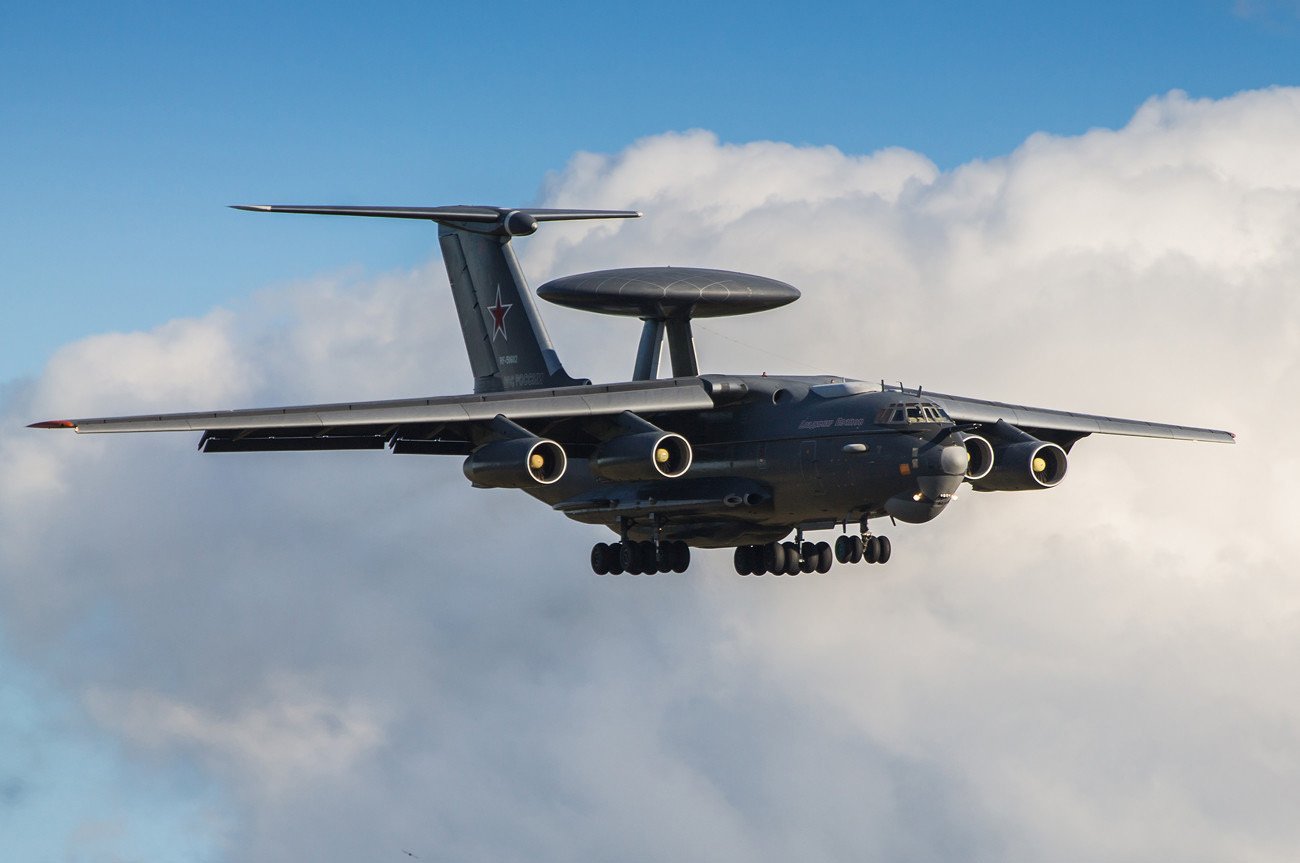The Russian Aerospace Force has received an upgraded A-50U early warning and control aircraft system (AWACS), popularly known as the ‘Mainstay’ by NATO, from the Rostec State Corporation.
Despite F-16 Setback, Sukhoi-30 MKI Flanker ‘Outflanks’ MiG-29 ‘Fulcrum’ To Emerge As Top Choice For IAF
“The holding company Roselektronika and the United Aircraft Corporation (both are part of the state corporation Rostec) have provided for the Armed Forces another upgraded airborne long-range radar surveillance and guidance system A-50U,” the Rostec press service said in a release.
Highlighting new and cutting-edge capabilities added to the aircraft, Rostec stated, “The aircraft can detect new types of aircraft. Also, it can simultaneously track a larger number of targets and guided fighters than its predecessor. Modern equipment has reduced the aircraft’s weight and increased the plane’s range and time in the air while performing combat missions.”
In July this year, Russian Defense Minister Sergei Shoigu stressed the urgency of the A-50 Airborne Warning & Control System (AWACS) modernization in a conference call with Russian Armed Forces officers. The deficit in the number of modern A-50U AWACS aircraft has consistently been cited as a problem for the Russian Air Force (RuAF).
The modernization and swift delivery of the aircraft are essential because these flying radars are used in Russia’s Special Military Operation in Ukraine and are believed to be indispensable for establishing air superiority. The A-50 is crucial to RuAF, offering long-range surveillance, command and control capabilities, and early warning of airborne threats.
Since the start of the Special Military Operation in February 2022, the big challenge for Russia has been the limited availability of capable AWACS platforms. Already short on the platform, the RuAF faced a big setback when an A-50U aircraft was damaged in a drone attack at the Machulishchy air base in Belarus in late February.
A British intelligence update later noted that the A-50 Mainstay would likely provide situational awareness to the MiG-31K Foxhound fighter aircraft equipped to launch the AS-24 Killjoy air-launched ballistic missile. This highlights the role that the aircraft performs in the battlespace.
The update also noted, “The loss of an A-50 Mainstay would be significant as it is critical to Russian air operations to provide an air battlespace picture. It is a realistic possibility that joint Russo-Belarusian air activity will now be forced to rely on ground control and fighter escort until another Mainstay can be deployed.”
This is why the officials in the Kremlin have time and again stressed that the fleet of the A-50U aviation complexes needs to be upgraded soon to considerably improve the efficiency of unit formations in completing their missions. The need becomes more urgent given that NATO has deployed the US E-3 AWACS aircraft in NATO airspace bordering Ukraine.
The E-3 can detect and track multiple airborne targets simultaneously. In fact, since the outset of the conflict, E-3 platforms have provided the Ukrainian Air Force air surveillance and enhanced situational awareness of very high quality, which comes in handy in planning sorties and missions against the RuAF.
An E-3 can identify aircraft, missiles, and drones flying in Ukrainian and Russian territory while in NATO airspace near the Ukrainian border. More crucially, it can identify the enemy target types and tell friendly from hostile aircraft in a frequently congested environment.
Therefore, the appeal by the Russian Defense Minister in July was received with optimism, and the timely delivery of the aircraft to the RuAF has been seen as a step in the right direction that will bolster the capability of the RuAF, especially as Ukraine is readying to receive the F-16 fighters from NATO.
Upgraded A-50U AWACS Of The Russian Air Force
The aircraft boasts modern electronics with improved performance metrics and speed, allowing for an expansion of functional software capabilities. The radar display system on the plane is more effective thanks to new LCD monitors with higher size and resolution.
Ergonomic improvements will lessen crew fatigue. Additionally, the A-50U has a redesigned navigation and piloting system.
Modern military operations depend on the A-50U airborne long-range radar surveillance and guidance system. The new equipment improves the effectiveness of thwarting the adversary, which also boosts the speed and range of target identification for air, land, and marine targets.
According to Rostec, the aircraft has been upgraded within the plan’s parameters outlined in the state defense directive. An improved version of the A-50, the A-50U aircraft is made by the Vega Concern (a unit of Rostec’s Roselektronika holding) and the Beriev Taganrog Aviation Scientific-Technical Complex, a division of United Aircraft Corporation.
The aircraft is designed to locate, trace, and identify air, ground, and sea targets, inform command centers of their locations, and direct fighter aircraft to air targets and front-line aircraft to land and sea targets.
State tests for a modernized variant, the A-50U, commenced on September 10, 2008, with development work beginning in 2003.

The new digital avionics suite installed in the A-50U by Vega Radio Engineering Corporation accelerates data processing and enhances target and signal tracking. More than 300 airborne targets can be tracked at once by the A-50U because of its powerful computational capabilities. It comes with fuel-efficient engines that enable more extended range.
According to reports, the device can identify bomber-class targets 650 kilometers away and cruise missiles 215 kilometers out. Even small targets, like drones, can be followed.
According to Rostec, the A-50U “can detect fundamentally new types of aircraft, and is also capable of simultaneously tracking a greater number of targets and guided fighters than the previous modification.” Likely, the “new type of aircraft” part of the statement alludes to the capability to track low-observable aircraft, missiles, and drones.
- Contact the author at sakshi.tiwari9555 (at) gmail.com
- Follow EurAsian Times on Google News